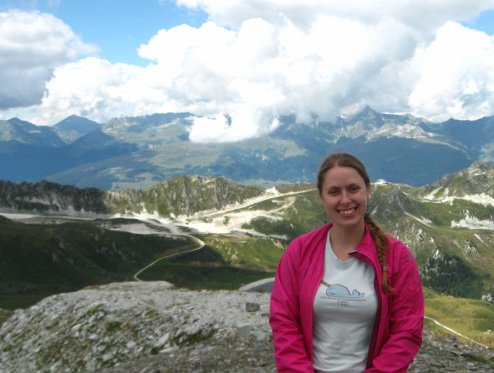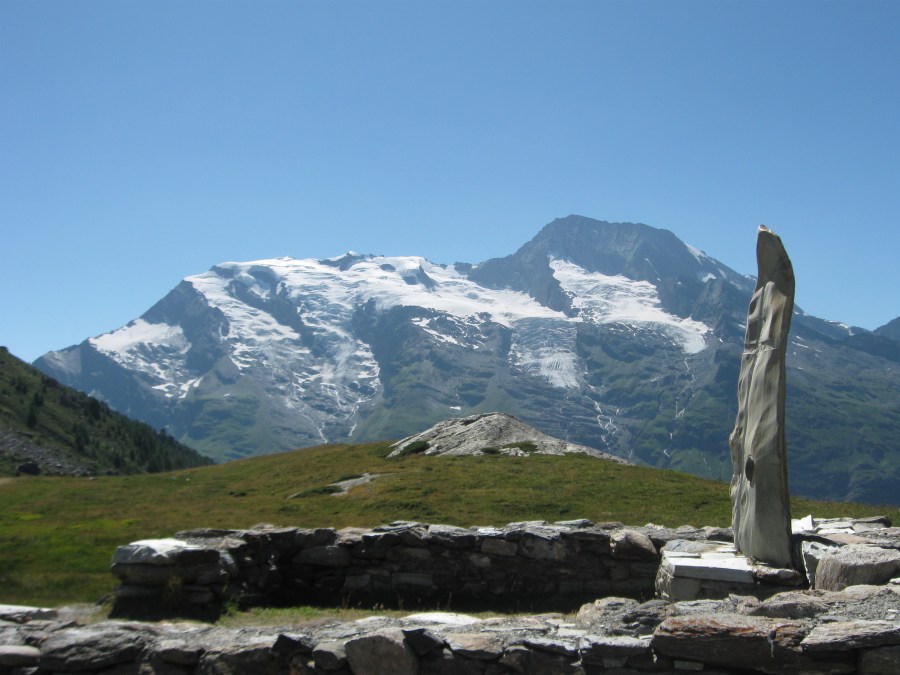With Mountains before Mountaineering Dawn L. Hollis journeys through the mountains, long before Everest was ‘discovered’ as the highest mountain in the world, to tell the story of how our love of the mountains has been a part of us from the very beginning.
Mountains Before Mountaineering is dedicated to debunking the prevailing idea that, until the concept of mountaineering came along, early modern people viewed mountains with gloom and doom. Just because people weren’t obsessed with the idea of summiting a peak or designating a national park as we are today, Dawn L. Hollis ultimately argues, does not them mountain-fearmongers make. It is the latest in a line of books unpicking the last century’s focus on colonial ideas of alpinism which places 20th century European adventurers at the beginning of what is, in actual fact, a rich history long pre-dating modern ideas of mountaineering.
Main image: The Chapel of St James above Le Clou in the French Alps | Credit: Dawn L. Hollis
Among this school of thought, Hollis’ voice stands out as analytical yet empathetic to the ‘real mountaineers’ of the early modern period – those who lived and worked amongst these geological giants. By “following in a crowd of premodern footsteps”, the text spotlights the thriving mountain trades of livestock, ore and snow as well as the historically female herders (apparently due to fears of male bestiality). Hollis winds back time to tell stories unwritten and utterly unique to the collective contemporary psyche.
Perhaps, for that reason, it is not a book for the peak bagger – although I think any hill or mountain folk would be hard pushed not to find it a thing of dazzling interest. You’re more likely to learn about Parnassus, Etna, Athos and the Peak of Tenerife than you are Everest or Mont Blanc. Importance is not measured in topography or elevation but (often religious or spiritual) cultural significance. It is this history which compellingly demonstrates that we are not the first mountain folk to observe high places with reverence.
You don’t need to be a positivist or post-modernist to understand the prose. Hollis maps out her reasoning with a historian’s precision. At times, it’s as much an ode to the work and processes of historians as it is mountains. Hollis claims the authors referenced as “friends” she works with and her refreshing voice chimes in to explain the historical texts well.

The author on the Aiguille Rouge above Les Arcs in the Tarentaise Alps. Credit: Dawn L. Hollis
In her mission to propose that the love of mountains is not unique to us, the author examines the myth of Petrarch as the father of alpinism and finds it lacking, unpicks Gessner’s writings and discovers that even he said going halfway up a hill is just as worthy as summiting. In dispelling the myth of high places as wilderness devoid of humanity, Dawn challenges Wordsworth and goes up against Robert Macfarlane, moving on from mountains as ‘the sublime’. Holistically, Hollis sees their whole histories and bestows them instead with ‘beautiful usefulness’.
The book is beautifully illustrated. With black and white reproductions, we see how early modern maps such as the Atlas Major reflected not the accurate contours of mountains but the emotional responses to their towering heights. The same can be said for artists of the era and their depictions of mountainous landscapes – a regular occurrence in the Virgin and Child trope. Why, wonders Hollis, would artists consistently and lovingly paint landscapes which had no significance to them? They wouldn’t, of course.
The author strikes a balance between her own admiration for mountains and the ability to see the oft-funny side of our human encounters with such landscapes. Occasionally we get a glimpse into Hollis’ own experiences with mountains, as in her “ambivalent” relationship with Skiddaw and her engagement on Blencathra. She muses on an as-yet-immaterialised route to Everest and wonders if avoiding a summit bid is the best way to love mountains.

For a book dedicated to exploring the language we use to describe mountains, I was surprised to see Welsh and Gaelic names of mountains omitted while the translations of others (Besh Marmag/Bes Barmaq, for example) were rightly included. But, as Hollis admits, the global history of mountains is a subject too immense to fit into a single book.
What Mountains Before Mountaineering does do is hold a mirror up to our beliefs about high places in order to deepen our understanding of why we feel the way we do about mountains – good and bad, ego-driven or ugly – so that we may be able to question our foibles and move forward toward a greater appreciation of these landscapes.
If mountains are an object of your admiration and your ego need not be stroked by superlative achievements in high places, you’ll enjoy this book and its reassuring quality of placing you in a long line of fellow mountain admirers.
Mountains Before Mountaineering: The Call of the Peaks before the Modern Age is published by The History Press (hardcover, £22)
When contributors to The Great Outdoors aren’t out walking, some like to relax with a good book. Read their outdoor book reviews and discover your next adventurous bedtime story.






